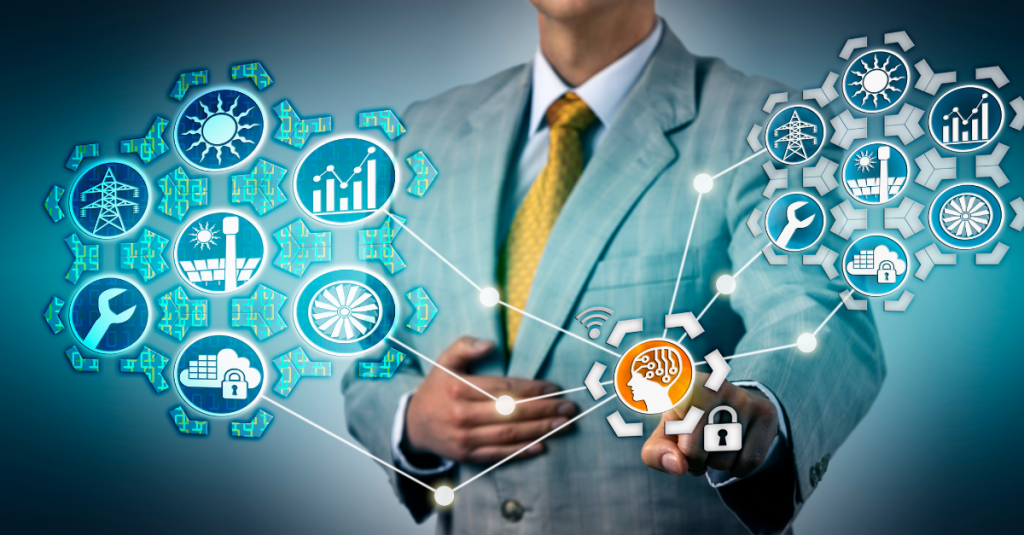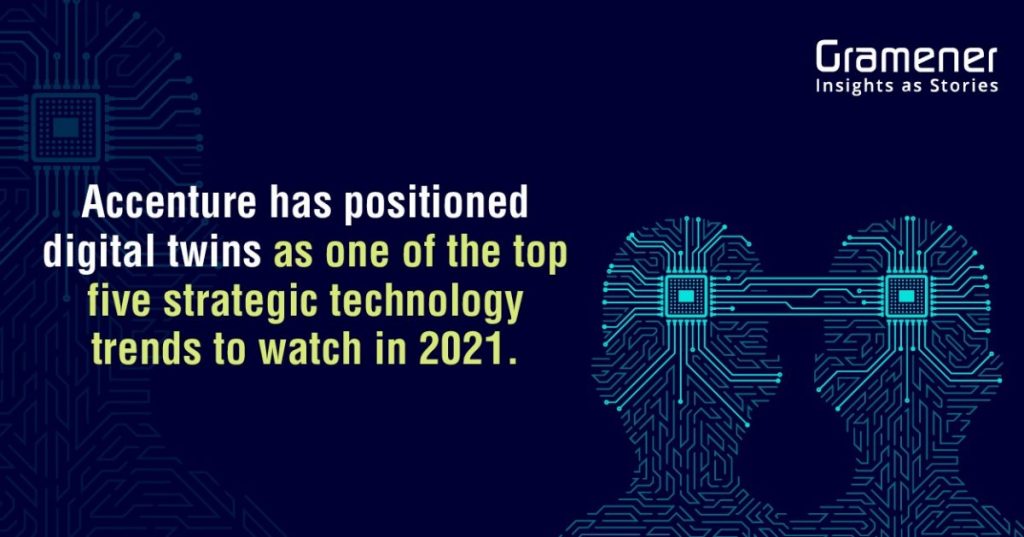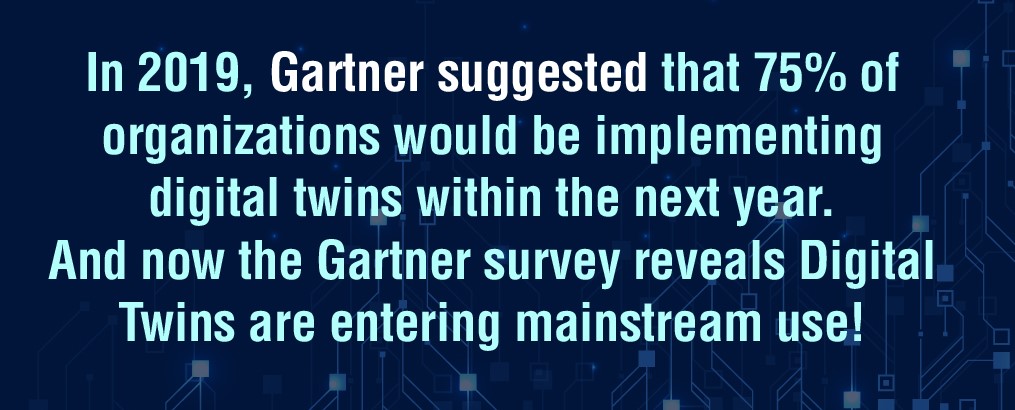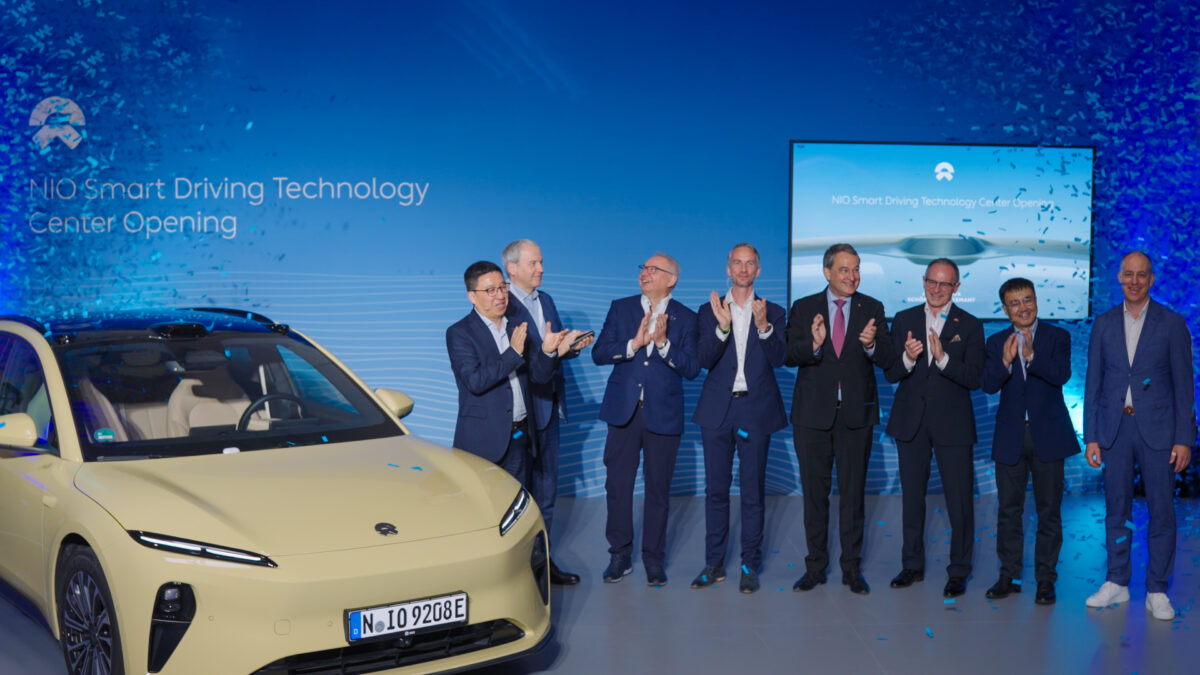A digital twin is a virtual representation, simulation, or mapping of a physical entity, which could be a process, person, object, system, or any other abstraction. While the concept is old, IOT adoption, hyper-automation and real-time data flow are driving the relevance of digital twin technology today. Digital twins are an emerging class of enterprise software that uses IoT technologies to monitor, analyse, simulate and control business processes.
The COVID-19 pandemic has driven enterprises towards digitisation and hyper-automation. Additionally, the technological advancements in cloud computing, edge computing, and artificial intelligence have created a strong surge in demand for digital twins in various industries. The manufacturing industry is one of the early adopters of the digital twin solutions.
Evolution—why now?
First heard in 2001, the term ‘digital twins’ had been relegated to the status of a mere buzzword. That was until now. In 2020, the digital twin market crossed the US$3bn mark and is poised to grow over 58% CAGR with a US$48bn market size by 2026. Amidst all this, there is a convergence of data science and process management happening to create real-time simulations on a physical environment map.
A digital twin is not just a replica of your physical environment. It is more than the sum of its parts and includes its past experiences and historical learnings in a digital environment that allows it to simulate, predict, and act
Currently, the capability of the digital twin to enhance process performance is fuelled by real-time process data availability and data science acceptance. This real-time data involves both operational and asset data that provides accurate configurations of the designed product and real-time operational information of the physical events.
That means that a digital twin is not just a replica of your physical environment. It is more than the sum of its parts and includes its past experiences and historical learnings in a digital environment that allows it to simulate, predict, and act.
The rise of IoT sensors and streams of Big Data flowing in from them have enabled the industry to power up digital twin technology with real-time input. Because data is real-time, data-driven decision-making is also real-time—making it count when it matters.
Types of digital twins
There are different types of digital twins that are perfect for the tasks required in a manufacturing process. A status twin can offer real-time monitoring and visualisation capabilities with basic filtering. Here, the interpretation of the results is left to the users. An operational twin can use basic analytics and monitor a process conditionally. It can give recommendations and perform automated actions. Using predictive twins, organisations can predict the quality of an outcome or even predict an equipment failure. This type of twin can optimise maintenance cycles and create a balance between corrective and preventive maintenance approaches. A simulation twin can replicate a system’s various processes to simulate multiple scenarios and accordingly preview various types of outcomes.

Digital twin in manufacturing
Today, the implementation of digital twin technology is transforming the manufacturing domain. Digital twins can create a virtual engineering model that replicates the physical equipment and runs real-time analytics to optimise the product or process.
Digital twins are increasingly being put to use in automotive manufacturing. For instance, the technology is currently being used in car manufacturing to increase the productivity, flexibility, and efficiency of the process. Organisations are simulating and testing all aspects of production before it even starts. They are using digital twins for optimising the design and physical behaviour of the product. Visualisation tools allow manufacturers to explore different materials, colours, and textures before the production stage. In fact, autonomous vehicles are being designed using digital twins to differentiate themselves with unique designs and interactive mobility solutions.

In essence, digital twins improve efficiencies through data-backed decision-making without foregoing the human touch. A production system that is enhanced with digital simulation can be both cost and time-effective. For those who implement this technology, there are realised benefits, including cost optimisation. Studies have shown that virtual costs of implementation decrease exponentially while physical costs increase at the rate of inflation (Grieves & Vickers, 2017). GE, one of the earliest adopters of digital twins in manufacturing, observed a 40% reduction in reactive maintenance in less than a year and a whopping US$11m avoidance in loss of production as a result of digital twins detecting and preventing any failures.
Digital twins help optimise the maintenance of manufacturing utilities and reduce overall downtime. They also alert the users on potential mishaps ahead of time. According to GE, there was a 75% reduction in the time taken to achieve manufacturing-related outcomes.
Challenges facing digital twin adoption
Despite the benefits, there are also some challenges in adopting digital twins. The technology offers a class of applications that are new for everyone involved. As a result, there are no industry-ready products that can be picked off the shelf for deployment. But every industry needs custom digital twin solutions that best fit their requirements. Therefore, to answer those needs, a host of digital twin players are providing bundled offerings along with their flagship products and services.
Some vendors are offering digital twins based on their proprietary platform to demonstrate some value addition and differentiate themselves from the competition. Other established players are offering subscription-based, perpetual, and consumption-based licensing for their digital twin solutions. There are few LCAP (low-code application platform) companies operating in this market partnering with other technology partners to explore and offer significant value addition to the clients.

Then there is the issue of infrastructure. Not all firms have the infrastructure to implement the digital twin model. The technology is still relatively new to many companies that have not been exposed to it yet. The real benefit of digital twins can be extracted with real-time data. That means that this technology depends heavily on IoT devices and a system of interconnected devices, objects, or people with unique identifiers with a seamless flow of data between them. For companies that have not implemented this infrastructure, it is impossible to implement this technology.
Depending on the complexity of a project, digital twin implementation can require significant investment. Also, because implementing digital twin technology on one process will affect the related processes, it will require much planning and collaboration.
Summary
The journey to digital twin adoption should be viewed as an intersection of data science and business process management. An organisation embarking on this journey of digital twin adoption should assess where it stands with respect to its data maturity and process measurement. Automating the critical processes would be a major step for an organisation to start on its digital journey. It should also be open to look at OTS (off the shelf) solutions which are nascent today as well as explore capabilities of low code platforms to custom create digital twins.
About the author: Naveen Gattu is Chief Operating Officer and co-founder of Gramener



